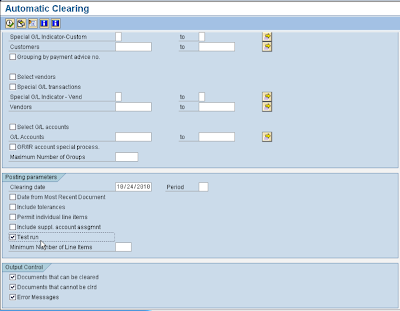ASAP Methodology/ 6 Phases of Implementation
6
phases of Implementation SAP
1) Presales
In this phase, SAP and other ERP’s try to
sell their products to the clients (i.e. companies). And then company chooses
which is more suitable for their requirements (let’s say they chose SAP, then
our work starts.)
2) Preparation
Landscape
information/ preparation (server info. Cost, how many people going to use it etc.)
·
Team size: two teams implementation team and
core team
·
(Project managers and steering committee from
implementation team and core team together called PMO: Project Management
Organization)
·
As is study: study of current situation,
processes, legacy system etc. This is done by core team.
·
As is flow chart (tools are Visio, arise etc.)
·
Gather all the reports
·
Study legacy system
·
Information on drawing (handled by Document
Management System DMO, also by PP)
·
Gather information on interfaces-must have, need
to have, nice to have
·
Document As Is
·
Sign off
3) Business Blueprint
(Requirement analyze phase)
·
Gather requirement for legacy
·
To be
·
GAP analysis (difference between as is and to
be)
·
To be process flow
·
List of interfaces to be finalized (must have
done now and need to have will be post go live)
·
List of reports
·
RICEFW objects (Reports, Interfaces, Conversion,
Enhancements, Forms and Workflow)- These are customize reports.
·
Functional specification- for all RICEFW objects
·
Technical specification
·
Sign off on docs above
·
Test scripts
·
Test cases
·
Test scenario-Simple, complicated and complex
·
Business process procedure (ASAP)
·
Using PowerPoint all functional consultant give
a demo
·
Using PowerPoint presentation give demo only for
your module (workshop)
·
Using 800 client give a SAP demo-800 is IDES
server (IDES never have customer information)
·
Q&A database (to be answered by core team)
·
Organization structure
·
Collision list (material, vendor and customer,
unit of measure)
·
To be documentation
·
To be sign off (consultant and project manager)
4) Realization
·
Carry out baseline testing in 800 clients
·
You are provided with a new client 200
·
Carry out basis configuration (back end) - done
by consultant
·
Copy of configuration sent to client 300
·
Testing carried out in 200-300 is a golden
client; no master data, just configuration so we can’t do testing in 300
(testing by core team)
·
You are provided with a new client 400 (basic)
·
Carry out additional configuration in 400
(200+400)
·
Copy of configuration sent to 300
·
Testing carried out in 400 (core team)
·
You are provided with a new client 600 (sandbox)
·
Carry out additional configuration in 600
(600+200+400)
·
Copy all configurations to client 300
·
Testing carried out in 600
·
Using client 600
·
Upload master data across all modules (sample
load of few parts or entire data end as per client wants)
·
All RICEFW objects must be ready tested by you
and ready for testing by business
·
Carry out integration testing 1 in client 600
(across all modules)-simple scenario (10) and complicated scenario (10)
·
Integration testing in client 600 (across all
modules, group test), complex scenario (5)
·
Training needs and documents, identify roles and
responsibility (based on SOX compliance)
·
Training client 910 produced by basis
5) Pre go live phase
·
Suggest business to clean up master data in
legacy, all configurations from golden client will be moved to 910, 960 and 999
·
Master data templates provided by business- if
we upload just sample data before then we need to provide templates here
otherwise templates provided when entire data uploaded in previous phase)
·
Upload master data there are 2 tools: LSMW and
interfaces (interfaces like Biz Talk, tibco, XI etc)
·
Training session carried out
·
You are provided with a new client 910
(Development server)
·
Master data upload into 910
·
Sometimes Business carried out integration
testing 3
·
You are provided with a new client 960 (quality
and integration test server)
·
Master data upload into 960
·
You are provided with a new client 999
(production server)
·
Master data upload to 999 (this is the live
server use for business)
·
Cutover activities (in client 999); when to stop
legacy, when to start SAP, when to run MRP, controlled start up
6) Post production support:
·
Configuration change
·
Master data changes
·
Transaction level changes
·
Some more training
·
Master data to be plugged
·
Missing authorization
·
Complete all documentation work (For both
configuration and end use depend upon client)



We have the best SAP module consultants, and Denpro Technologies has a proven track record in SAP. If you are searching for a company that can help boost your business, Denpro Technologies is the most best SAP Consultant services in Noida.
ReplyDelete